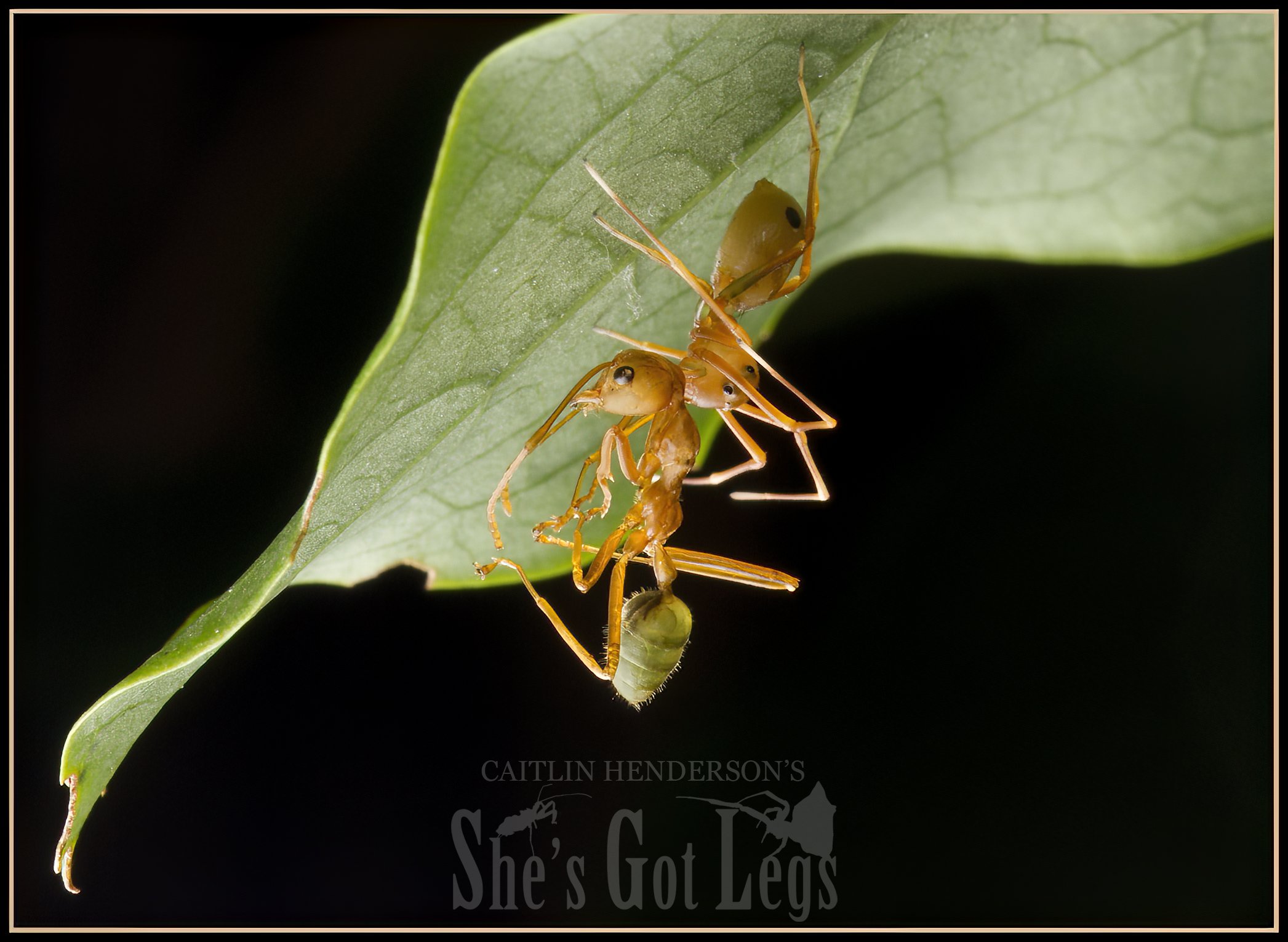Unstoppable Weaver Ants use their bodies as bridges | Green Ants (Oecophylla smaragdina)
Weaver Ants (Oecophylla smaragdina), more commonly known in Australia as Green Ants or Green Tree Ants, are remarkable insect engineers. Rather than living in underground nests, these ants build their homes in the trees.
Using silk to bind live leaves together into sometimes football-sized treehouses, a colony will usually build several nests as it expands across the treetops.
Green Ants cooperate to build nests from live leaves. They begin by holding the leaves together using their mandibles and legs, acting like “stitches” until they glue the nest together with silk.
The silk is produced by the Green Ant larvae. Workers carry these larvae to the worksite in their mandibles, using the helpless larvae to “paint” the silk glue between two leaves.
When Green Ants can’t reach their next nest location or reach food, they band together, holding on to each other to form a living bridge.
Green Ants prey on live invertebrates, sometimes much larger than themselves. They have even been known to eat small vertebrates such as lizards.
The Weaver Ant genus can be found from northern Australia into Asia, and in central Africa.
Many other species mimic Weaver Ants for protection or in order to prey on them.
This Bean Bug (Riptortus sp.) mimics the Green Ant as a juvenile. Adults are brown.
Learn more about Green Ants in this video from the She’s Got Legs YouTube.








